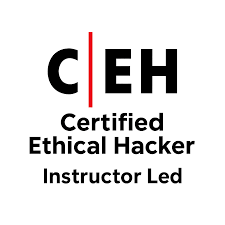Palo Alto Training – Learn Palo Alto Firewalls in 2025

The Certified Ethical Hacker (CEH) exam is one of the most sought-after certifications in the field of cybersecurity. With the rise in cyber threats and a growing need for professionals who can test and secure IT environments, the CEH validates your ability to think and act like a hacker—ethically, of course. To pass the CEH […]

The Certified Ethical Hacker (CEH) exam is one of the most sought-after certifications in the field of cybersecurity. With the rise in cyber threats and a growing need for professionals who can test and secure IT environments, the CEH validates your ability to think and act like a hacker—ethically, of course.
To pass the CEH v12 exam and thrive in real-world ethical hacking roles, it’s crucial to be familiar with the most widely used tools in the industry. These tools not only appear frequently on the exam but are also essential in day-to-day penetration testing and vulnerability assessment.
Here are the Top 10 tools you must master to ace the CEH exam in 2025.
Purpose: Network discovery and security auditing
Category: Reconnaissance & Scanning
Nmap is one of the most foundational tools for ethical hackers. It allows you to map a network, discover live hosts, scan ports, detect services, and identify vulnerabilities. Nmap can also detect operating systems, running services, and firewall rules.
nmap -sS <target> – Stealth scannmap -A <target> – Aggressive scan with OS and service detectionnmap -Pn <target> – Disable pinging before scanningWhy It Matters for CEH: Nmap is central to the information gathering phase of ethical hacking, which is heavily emphasized in the exam.
Purpose: Exploitation and post-exploitation
Category: Exploitation Framework
Metasploit is a powerful open-source platform used for developing, testing, and executing exploits. It provides pre-built payloads and modules that allow ethical hackers to simulate real attacks and test vulnerabilities in a controlled environment.
msfconsoleWhy It Matters for CEH: Understanding Metasploit helps demonstrate your ability to exploit known vulnerabilities safely and test system defenses.
Purpose: Web application vulnerability scanning
Category: Web Application Testing
Burp Suite is an integrated platform for performing security testing of web applications. It includes tools like a proxy server, intruder, repeater, and scanner.
Why It Matters for CEH: Web-based attacks like XSS, CSRF, and SQL injection are core parts of the CEH syllabus.
Purpose: Network protocol analysis
Category: Packet Sniffing
Wireshark is a widely-used network protocol analyzer that captures and inspects packets in real time. It helps identify unusual traffic patterns, DNS spoofing, and other attack vectors.
Why It Matters for CEH: Packet analysis is crucial for network-level security monitoring, a major domain of the CEH exam.
Purpose: Password cracking
Category: Cryptanalysis
John the Ripper is a fast password-cracking tool that can crack weak passwords using dictionary and brute-force attacks. It supports various encryption standards and can be combined with other tools for more effective cracking.
rulesWhy It Matters for CEH: Password attacks and cracking techniques are part of CEH’s core knowledge areas, especially in the “System Hacking” domain.
Purpose: Wireless network cracking
Category: Wireless Hacking
Aircrack-ng is a suite of tools used to assess Wi-Fi network security. It can capture packets, analyze them, and crack WEP and WPA-PSK keys.
airodump-ng for capturing trafficaireplay-ng for injection attacksaircrack-ng for key crackingWhy It Matters for CEH: Wireless attacks and encryption bypass are critical topics in the CEH curriculum.
Purpose: Web server vulnerability scanner
Category: Vulnerability Assessment
Nikto is a command-line web server scanner that detects outdated software, insecure files, and known vulnerabilities in web servers.
Why It Matters for CEH: Understanding web server weaknesses is a major component of application-level attacks in CEH.
Purpose: Brute-force login attacks
Category: Password Attacks
Hydra is a fast and flexible tool used to conduct brute-force attacks on login pages. It supports numerous protocols, including HTTP, FTP, SSH, and more.
hydra -l admin -P passlist.txt ftp://targetWhy It Matters for CEH: Hydra demonstrates the risks of weak authentication systems, a frequently tested topic.
Purpose: Information gathering and visualization
Category: OSINT & Reconnaissance
Maltego excels in gathering data from open sources and visually mapping relationships between entities (e.g., people, domains, IPs).
Why It Matters for CEH: CEH emphasizes reconnaissance, and Maltego is a go-to tool for passive and active information gathering.
Purpose: Vulnerability scanning
Category: Assessment & Compliance
Nessus is a professional vulnerability scanner used to detect security flaws in systems, networks, and applications. It is widely used in enterprise environments.
Why It Matters for CEH: Identifying and prioritizing vulnerabilities is a core ethical hacking task—and a significant exam topic.
While the above are the top 10, a few other tools often come up during CEH prep:
Mastering these top 10 tools gives you a significant advantage not only in passing the CEH v12 exam but also in becoming a capable and confident ethical hacker. Each tool represents a crucial phase in the hacking process—reconnaissance, scanning, gaining access, maintaining access, and covering tracks.
By investing time in hands-on practice and real-world simulations, you’ll be better prepared to tackle exam questions and real-life security challenges alike.
Related Reading:https://securevalley-training.net/certified-ethical-hacker-ceh-fr/
Get certified with industry-leading cybersecurity certifications from EC-Council, PECB, Palo Alto Networks, and more.

Learn from world-class instructors Collaborate with top professionals Advanced training...

The CEH is the world's leading cybersecurity certification, recognized by...

Onsite training course Led by an instructor Interactive sessions

Asynchronous, self-study environment Video-streaming format Flexible learning schedule
Adding {{itemName}} to cart
Added {{itemName}} to cart

